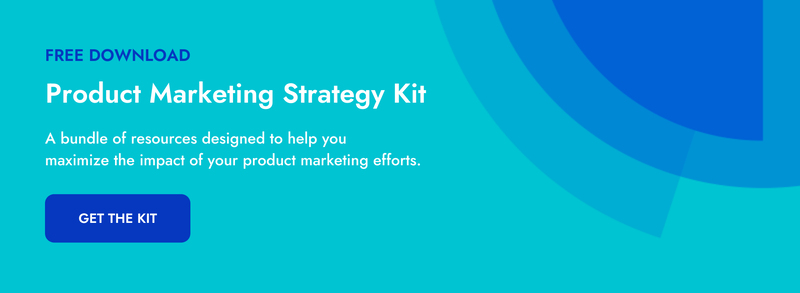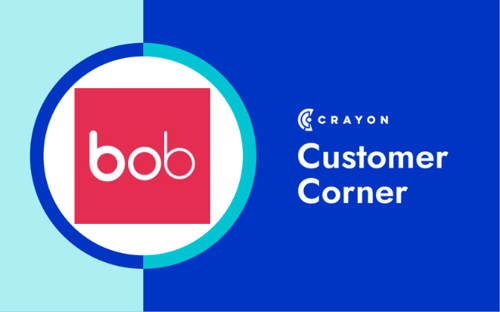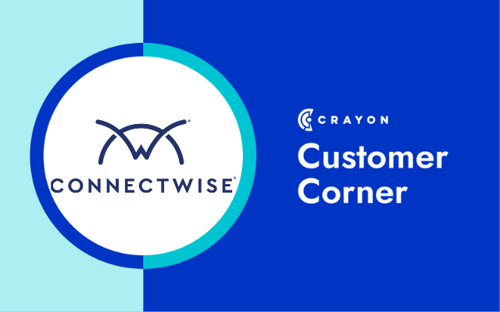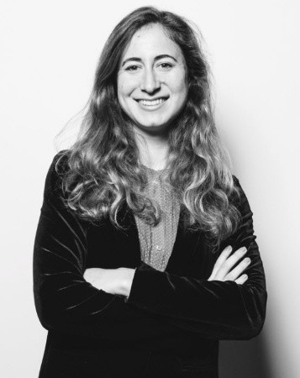 Crayon's Product Marketing Spotlight is an interview series where we chat with product marketers to get a glimpse into their careers and gain unique insight into product marketing strategy. In this edition of Product Marketing Spotlight Series, we shine the light on Clara Gray, Product Marketing Manager at Flatiron Health.
Crayon's Product Marketing Spotlight is an interview series where we chat with product marketers to get a glimpse into their careers and gain unique insight into product marketing strategy. In this edition of Product Marketing Spotlight Series, we shine the light on Clara Gray, Product Marketing Manager at Flatiron Health.
ED: What is your role?
CG: I am a Product Marketing Manager at Flatiron Health in NYC. I work with an amazing team, and our overarching goals include driving business strategy and influencing product roadmap decisions, enabling sales to generate and nurture leads, and supporting customer retention by developing value messaging for product rollouts and content for customer events.
As with most Product Marketing teams, we cover a pretty vast scope, but we each have a specific area of focus. Within my role, I develop value messaging for clinical products, drive customer marketing for our physician segment, and lead our ongoing market research initiatives for competitive intel and win/loss analysis.
ED: What does the company do?
CG: Flatiron Health aims to improve the quality of cancer care and accelerate cancer research by learning from every cancer patient. To do this, our products connect community oncologists, academics, hospitals, life science researchers, and regulators on a shared technology platform. To do this, we provide software and services to community oncology clinics, where our goal is to help these community practices thrive. We also partner with academics and life science companies to help expedite research through the application of real-world data.
ED: Did you always know you wanted to be in Product Marketing? Tell me about your career path and how you became a PMM.
CG: Not at all! I was lucky to stumble my way into this field, which turns out to be a dream job for me.
As an undergrad, I majored in psychology and French. I picked Psychology because I thought I wanted to be a clinical psychologist, and French because I wanted to spend a year studying in Paris (which was 100% worth the double major). My first experience with healthcare technology was a part-time internship at athenahealth during my final semester of college, when I thought I’d better get some real-world work experience before committing the next several years to a psychology PhD. At the time, I was planning to spend the year after college teaching English in France. But I soon found myself loving my internship, and the domain of healthcare technology that I was newly immersed in. It was a very hard decision, but I decided to stay for the summer, and then for another year, and I haven’t looked back.
My first full-time position was on the Market Intelligence team, where my primary role was conducting competitor research to help with our most complex Enterprise Sales deals. Just three months later, the company went through a reorganization, and my role was placed within the burgeoning Product Marketing team. In this role, my scope expanded to include more market research, training, and sales enablement. I really enjoyed the combination of learning and teaching that this role required, and the cross-functional nature of sitting between product, marketing, and sales. When I started looking for new opportunities, I really wanted to stay within healthcare and product marketing. I saw this role open at Flatiron Health - which was a company I’d had my eye on for a while. Now I’ve been at Flatiron Health for a whirlwind year and a half, and I’m loving it.
ED: What skills from past roles have helped you prepare for your current role?
CG: I think the fact that I worked on competitive intelligence research at my previous company helped me be successful in bringing some of those tools and tactics to my Flatiron team to help build a competitive intelligence program for us. Funnily enough, I also think my liberal arts education and background in psychology research labs helped prepare me for a role in competitive intelligence, because of the attention to detail - the focus and rigor - that academic research requires, as well as knowing where the information is coming from, the author’s point of view, their potential biases, ensuring all information is documented and cited properly and used ethically.
I think another “softer” skill I gained in my past role that has helped me is humility. Healthcare is incredibly complex, and I work with exceptional subject-matter experts, experienced physicians, and industry experts at Flatiron and at our client sites. It’s easy to be intimidated and hard to keep up with the ever-changing industry and regulatory landscape. But in my first role at athena, I had the opportunity to practice humility quite a lot. After a few months, I began training new hire classes on our competitive landscape. These classes were up to 60+ people, including new leaders and executives. I only succeeded in this role by a) practicing a TON, and b) by remaining honest when I didn’t know something. I committed to helping track down answers after a presentation - but if I didn’t know something in the moment, I didn’t fake it. This was good practice for remaining humble while still being helpful, and a skill that has definitely helped me navigate my new role with a new set of stakeholders and customers.
ED: How much of your day-to-day involves competitive intelligence?
CG: Honestly, it really varies by what’s happening in our market and what company initiatives are underway. Some of my ongoing competitive intelligence work involves regular updates to our competitive news tracker, as well as a monthly newsletter, quarterly competitive trends synthesis, and quarterly competitor profile updates. There are, of course, ad-hoc requests and research projects too that our whole team is involved in.
ED: How do you get your sales team to actually use your sales enablement / CI resources?
CG: For us, it’s a matter of integrating directly into the processes and resources our Sales team uses every day. We share real-time updates in Slack, including the latest intel we’re seeing from Crayon. For larger updates, we’ll join their weekly deal review meetings, or send intel through email. We also use Google Docs to house the latest breaking intel and in-depth competitor-specific profiles, since Google Docs are widely used across teams at our company. This allows our stakeholders to comment, tag, and share, without creating a whole new process for them.
Another thing we’ve learned is how important it is for the insights we share to be actionable. It’s something we’re continuously working on, but we’re committed to identifying incremental, actionable recommendations for sales and marketing so we can pivot and improve based on what we’re learning.
ED: What advice do you have for someone who wants to start a job in product marketing?
CG: Go to a Product Marketing conference! I’ve really enjoyed the ones put on by the Product Marketing Community. At these conferences, I’ve met both seasoned product marketers and people who are trying to get into the role, so I think it’s a great networking and learning opportunity for product marketers at every career stage.
ED: What’s the best career advice you ever received?
CG: I think there are two pieces of advice that stand out. First - don’t be afraid to say you don’t know the answer. You can be a lot more effective by helping to track down the answer, or connecting them to someone who has the information. Second - make sure you’re constantly learning, and prioritizing professional development. In a highly cross-functional role like Product Marketing, there will always be stakeholders requesting deliverables or updates. So, it’s really up to you to keep professional development goals on your priority list, and to carve out the time to make progress towards these goals. For me, these personal development goals include committing to calendar audits to ensure I’m balancing meetings and focused work time, and trying out new personal organization tools and tactics to be a more adept project manager.
ED: Which blogs or newsletters are must-reads for product marketers?
CG: This isn’t exactly a blog, but Pragmatic Marketing is my go-to PMM resource. I also really like the newsletters from Product Marketing Alliance and Product Marketing Community.
ED: When you’re not hard at work, what’s your favorite thing to do?
CG: I’ve lived in New York for a little over a year now, but it often feels like I just got here. There’s so much to do! So I love exploring my neighborhood and the city. My favorite thing is trying new restaurants. I also love taking weekend trips to my hometown in Vermont.
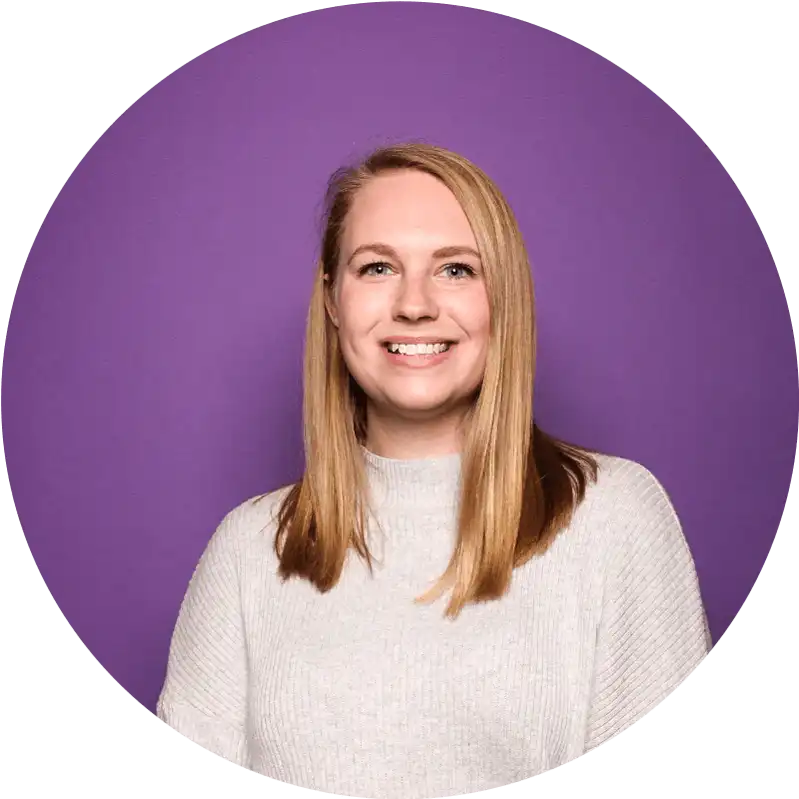
Related Blog Posts
Popular Posts
-
 The 8 Free Market Research Tools and Resources You Need to Know
The 8 Free Market Research Tools and Resources You Need to Know
-
 6 Competitive Advantage Examples From the Real World
6 Competitive Advantage Examples From the Real World
-
 24 Questions to Consider for Your Next SWOT Analysis
24 Questions to Consider for Your Next SWOT Analysis
-
 How to Create a Competitive Matrix (Step-by-Step Guide With Examples + Free Templates)
How to Create a Competitive Matrix (Step-by-Step Guide With Examples + Free Templates)
-
 How to Measure Product Launch Success: 12 KPIs You Should Be Tracking
How to Measure Product Launch Success: 12 KPIs You Should Be Tracking
